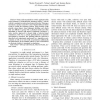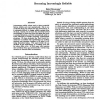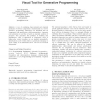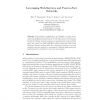640 search results - page 36 / 128 » Architectural paradigms for robotics applications |
IJCAI
1997
13 years 9 months ago
1997
Psychological experiments on children's development of spatial knowledge suggest experience at self-locomotion with visual tracking as important factors. Yet, the mechanism u...
ICRA
2005
IEEE
14 years 1 months ago
2005
IEEE
— Many tasks examined for robotic application like rescue missions or humanitarian demining require a robotic vehicle to navigate in unstructured natural terrain. This paper intr...
AIPS
1994
13 years 9 months ago
1994
Autonomousmobile robots need to detect potential failures reliably and react appropriately. Dueto uncertainties about the robots and their environment,it is extremelydifficult to ...
SIGSOFT
2005
ACM
14 years 8 months ago
2005
ACM
A way of combining object-oriented and structural paradigms of software composition is demonstrated in a tool for generative programming. Metaclasses are introduced that are compon...
CAISE
2003
Springer
14 years 1 months ago
2003
Springer
Abstract. Peer-oriented computing is an attempt to weave interconnected machines into the fabric of the Internet. Service-oriented computing (exemplified by web-services), on the ...




